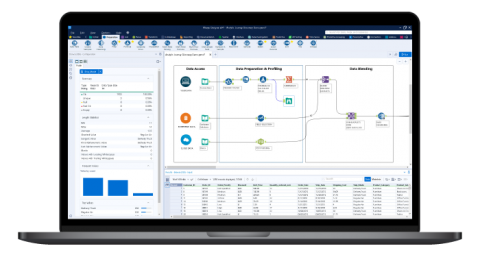SOLUTION overview
With support from WIT, our client deployed multiple Alteryx workflows to cleanse and shape data for Current Expected Credit Losses (CECL) reporting - saving them hundreds of hours annually.
INDUSTRY
Banking
FUNCTION
Regulatory Compliance Reporting

BACKGROUND
This large regional bank offers exceptional full-service banking and lending expertise with a distinctive, personal focus. Chartered as a federal savings bank, today the bank has assets of over $25 billion, is among the top 10 largest bank mortgage originators nationally, and among the top five largest savings banks in the country.
OPPORTUNITIES
As one of many regulatory requirements mandated by the Securities and Exchange Commission, the Current Expected Credit Losses (CECL) accounting standard was implemented to improve credit loss forecasting and reporting across the banking industry. This new standard went live in early 2020.
Credit loss forecasting was not a new phenomenon at the bank. The bank was already leveraging a third-party credit impairment service to help predict credit risk across its loan portfolio. However, with the new specifications defined by CECL, the bank needed to redefine how loan data was collected and transformed for reporting in a CECL context. In addition, some of the bank’s portfolio did not match the required input format of the legacy credit impairment service, and those predictions had to be developed outside of the standard process. Key opportunities to address in this project include:
- Provide an automated process for CECL reporting
- Harmonize data from multiple sources
- Apply business rules and data cleansing procedures, preparing the data for input into a third-party credit impairment prediction service
- Apply custom data science models to predict risk for non-standard loans in the overall credit portfolio
- Provide world class analytics at an enterprise level
SOLUTION
The regional bank initially contemplated building the new CECL process around a largely manual, spreadsheet and pivot table-based methodology. However, having already experienced the value of Alteryx for other internal solutions, the decision was made to leverage Alteryx to automate the CECL process. Key elements of the process include:
- Merge and cleanse loan data from multiple sources, applying CECL-related business rules where required
- Import the consolidated loan data into a third-party credit impairment service, which assigns predictive risk profiles for each standardized loan
- Design and build predictive data science models for non-standard loans that did not quite meet the input requirements of the credit impairment service
- Merge the standard and non-standard loan risk values to automate the delivery of the Loan Value % Risk Set Aside Report, required by the CECL accounting standard, and make the data available for ad hoc analytics
OUTCOMES
As the new CECL accounting standard was researched by the bank, Alteryx was quickly determined to be the ‘best tool for the job’ and provided significant value. Key outcomes include:
- Automation of what would have otherwise been a highly manual effort, saving hundreds of hours annually
- Deployment of quality control checks into the process
- Deployment of an audit-friendly process using Alteryx’s self-documenting capability
- The bank is required to run this process quarterly, but thanks to the Alteryx solution, the process can be initiated monthly or multiple times per month to stay on top of any trends or abnormalities that may occur
About WIT
WIT is an analytics and automation consulting firm with over 25 years of experience. We help our clients build solutions to maximize the value of their data and analytics assets, and automate key business processes. In partnership with elite software companies, WIT’s capabilities span a broad spectrum of business functions and industry verticals. To learn more about the work we have done for our clients, visit Our Experience page.
